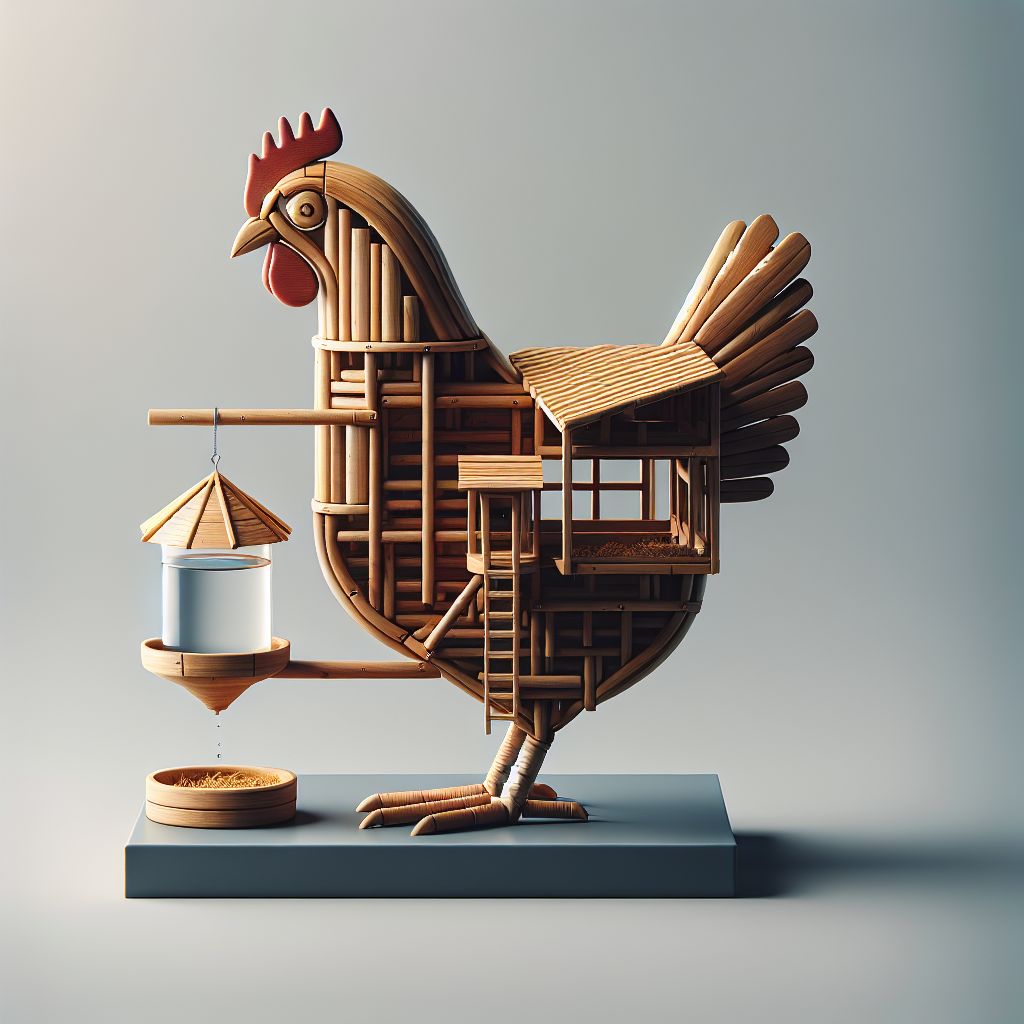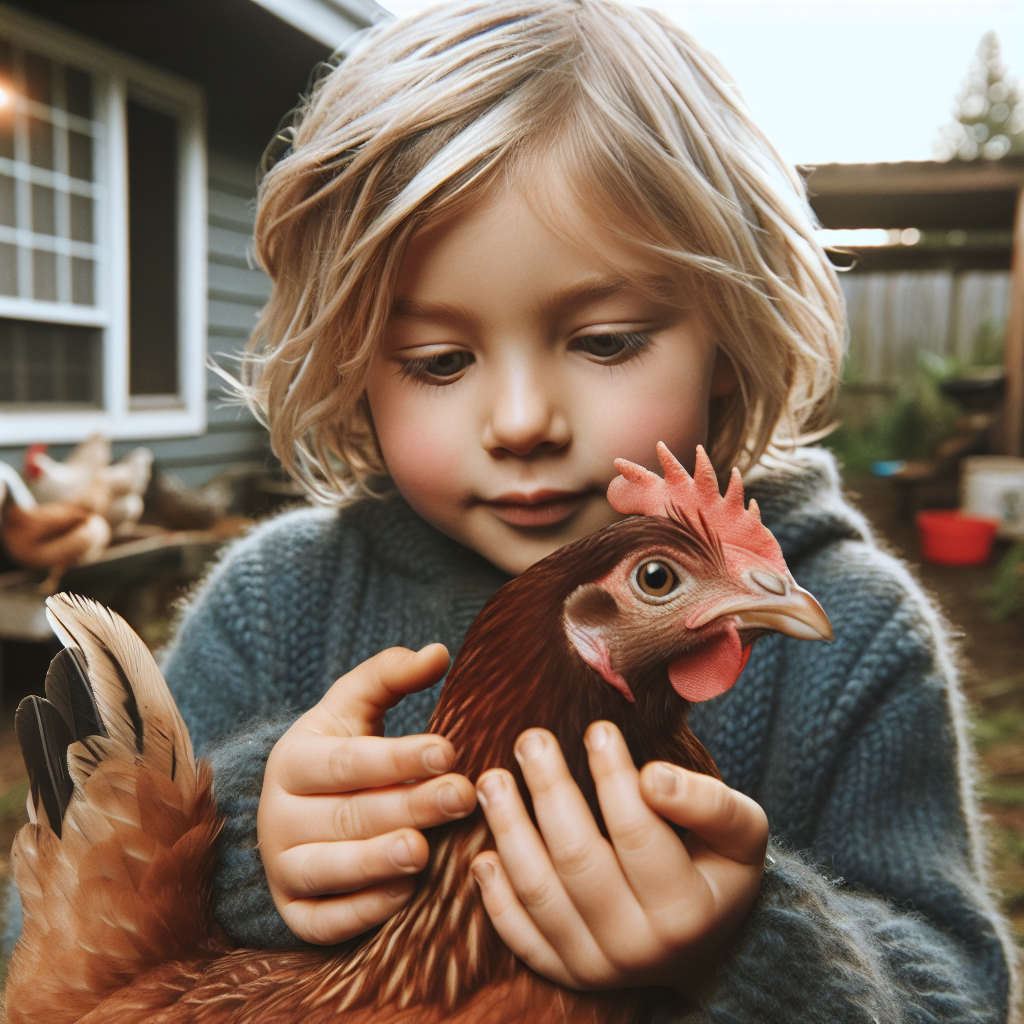In the world of backyard poultry practices, many enthusiasts are constantly on the lookout for innovative ways to optimize their setup and enhance their experience. This begs the question: Are there any do-it-yourself (DIY) solutions or clever hacks that can bring added benefits to managing your backyard flock? Whether you’re a seasoned poultry keeper or just starting out, exploring DIY solutions and hacks can not only save you valuable resources but also provide practical and creative alternatives to conventional methods. From homemade feeders and waterers to innovative coop designs, the possibilities are endless. So, let’s embark on a journey to uncover the DIY secrets that can transform your backyard poultry practices into something truly remarkable.
Benefits of DIY Solutions for Backyard Poultry Practices
Keeping backyard poultry has become increasingly popular, not only for its potential to provide a steady supply of fresh eggs and meat but also for the numerous benefits it can offer to individuals and communities. One of the key aspects that has contributed to the widespread enthusiasm for this practice is the availability of do-it-yourself (DIY) solutions and hacks that can enhance and optimize your backyard poultry operations. From cost effectiveness to increased knowledge and skills, incorporating DIY solutions can revolutionize how you care for your feathered friends. Let’s explore the many advantages of implementing DIY solutions for your backyard poultry practices.
1. Cost Effectiveness
1.1 Using Recycled Materials
One of the notable advantages of DIY solutions for backyard poultry practices is the ability to utilize recycled materials. Instead of purchasing expensive new materials, you can repurpose items that would otherwise be destined for the landfill. This not only reduces waste but also contributes to significant cost savings. By tapping into your creativity and resourcefulness, you can construct functional and sturdy coops, feeders, and other poultry essentials without breaking the bank.
1.2 Repurposing Household Items
In addition to using recycled materials, repurposing household items offers another cost-effective DIY solution for your backyard poultry practices. Everyday items such as buckets, old furniture, and even PVC pipes can be transformed into useful tools and equipment for your flock. This not only saves money but also adds a unique charm and personal touch to your poultry setup.
2. Customizability
2.1 Tailoring Coop Designs to Specific Needs
DIY solutions allow you to tailor coop designs to meet the specific needs of your flock. Whether you’re raising chickens, ducks, or turkeys, you can design a coop that maximizes space utilization, ventilation, and protection against predators. By customizing the coop layout and features, you can create a comfortable and secure environment for your poultry, improving their overall well-being and productivity.
2.2 Incorporating Personal Preferences in Feeding Systems
Another advantage of DIY solutions is the ability to incorporate your personal preferences into the feeding systems for your backyard poultry. Whether you prefer automatic feeders or enjoy the interactive process of hand-feeding, DIY solutions allow you to design feeding systems that align with your preferences and the specific needs of your flock. This customization ensures that your poultry receive the appropriate nutrition while also making the feeding process enjoyable for both you and your feathered friends.
3. Reduced Dependency on External Sources
3.1 Self-Sufficiency in Food Production
By implementing DIY solutions, you can achieve a greater level of self-sufficiency in food production for your poultry. Instead of relying solely on store-bought feed, you can grow your own crops and formulate a balanced diet for your flock. This not only reduces the dependency on external sources but also provides a healthier and more sustainable diet for your poultry. Additionally, growing your own feed can significantly lower long-term expenses.
3.2 Generating Renewable Energy for Poultry Operations
Incorporating DIY solutions can also enable you to generate renewable energy to power your poultry operations. Solar panels or wind turbines can be installed to harness nature’s energy, reducing your reliance on conventional power sources. Not only does this contribute to a more sustainable and environmentally friendly approach, but it can also result in substantial long-term savings on energy bills.
4. Increased Knowledge and Skills
4.1 Learning about Poultry Care and Maintenance
Engaging in DIY solutions for backyard poultry practices provides an excellent opportunity to enhance your knowledge about poultry care and maintenance. As you design and construct coops, feeders, and other poultry-related infrastructure, you will acquire practical hands-on experience and develop a deeper understanding of the needs and behaviors of various poultry species. This knowledge will empower you to provide better care for your flock and address any challenges that may arise.
4.2 Developing Construction and Problem-Solving Skills
Embarking on DIY projects for your backyard poultry practices not only expands your knowledge of poultry care but also hones your construction and problem-solving skills. From analyzing coop designs to troubleshooting equipment issues, DIY solutions require you to think critically and find creative solutions. These valuable skills can be applied beyond poultry practices and can contribute to your personal and professional growth.
5. Environmentally Friendly Options
5.1 Implementing Sustainable Practices
DIY solutions often lend themselves to implementing sustainable practices in backyard poultry operations. By using recycled materials and repurposing household items, you are minimizing waste and contributing to a circular economy. Additionally, implementing sustainable practices such as composting chicken manure and using it as fertilizer for your garden further reduces environmental impact and promotes a more holistic and eco-friendly approach.
5.2 Reducing Waste and Carbon Footprint
In line with sustainable practices, DIY solutions can also help reduce waste and carbon footprint associated with poultry practices. By repurposing materials and implementing efficient systems, you can minimize the amount of waste generated from your poultry operations. This not only benefits the environment but also saves you money on waste disposal and contributes to a cleaner and greener community.
6. Enhanced Security and Safety
6.1 Creating Predator-Proof Enclosures
One of the primary concerns for backyard poultry keepers is protecting their flock from predators. DIY solutions allow you to create predator-proof enclosures tailored to your specific needs and the local threats you may face. From reinforced fences to secure coop designs, you can implement measures that ensure the safety and well-being of your poultry, providing you with peace of mind.
6.2 Implementing Fire Prevention Measures
Another aspect of security and safety that DIY solutions can address is fire prevention. With careful planning and the use of fire-resistant materials, you can minimize the risk of fire incidents in your poultry operations. Installing smoke detectors, fire extinguishers, and designing proper ventilation systems are all essential steps you can take to protect your flock and property from potential fire hazards.
7. Sustainable Feeding and Watering Solutions
7.1 Designing Automatic Feeding Systems
DIY solutions offer the opportunity to design and implement automatic feeding systems for your backyard poultry. Automatic feeders can be customized to dispense the appropriate amount of feed at specific intervals, ensuring a consistent supply of nutrition for your flock. This not only saves time and effort but also allows you to manage your poultry’s diet more efficiently, reducing the risk of overfeeding or wasting feed.
7.2 Implementing Gravity-Fed Watering Systems
In addition to automatic feeding systems, DIY solutions can also facilitate the implementation of gravity-fed watering systems. By utilizing gravity and simple plumbing techniques, you can design watering systems that provide a constant supply of clean water to your flock. This not only ensures their hydration but also minimizes water waste and reduces the frequency of manual water refills.
8. Innovative Egg Collection Methods
8.1 Developing Continuous Nesting Box Systems
DIY solutions open up possibilities for developing innovative egg collection methods, such as continuous nesting box systems. With careful planning and construction, you can design nesting boxes that allow easy access to freshly laid eggs without disturbing the nesting hens. This not only streamlines the egg collection process but also reduces stress on the hens, resulting in healthier and more productive layers.
8.2 Implementing Conveyor Belt Systems
For larger-scale poultry operations, implementing conveyor belt systems for egg collection can be a game-changer. With the right DIY approach, you can design and build a reliable conveyor system that transports eggs from the nesting boxes to a central collection point. This automation not only saves time and effort but also minimizes the risk of egg damage, ensuring that you obtain high-quality eggs for consumption or sale.
10. Incorporating Technology
10.1 Utilizing Remote Monitoring Systems
In the digital age, DIY solutions can also involve incorporating technology to monitor and manage your backyard poultry practices more effectively. Remote monitoring systems, such as webcams and sensors, can be installed to observe your flock’s behavior, track temperature and humidity levels inside the coop, and receive alerts in case of any anomalies. This enables you to stay connected to your flock even when you’re away, ensuring their well-being and allowing for timely intervention if necessary.
10.2 Implementing Automated Lighting Systems
Another technological DIY solution for backyard poultry practices is the implementation of automated lighting systems. By installing timers or light sensors, you can regulate the amount and duration of light your poultry receives. This helps maintain their natural circadian rhythm and can influence their behavior, productivity, and overall health. Automated lighting systems can also help conserve energy by ensuring lights are only on when necessary.
In conclusion, DIY solutions for backyard poultry practices offer a multitude of benefits that can enhance your experience as a poultry keeper. From cost effectiveness and customizability to reduced dependence on external sources and increased knowledge and skills, implementing DIY solutions empowers you to optimize your poultry operations while fostering sustainability and environmental consciousness. Moreover, incorporating technology and innovative methods can further revolutionize how you care for your flock, making backyard poultry practices even more enjoyable and rewarding. So, roll up your sleeves, unleash your creativity, and embark on a DIY journey that will take your backyard poultry practices to new heights.




